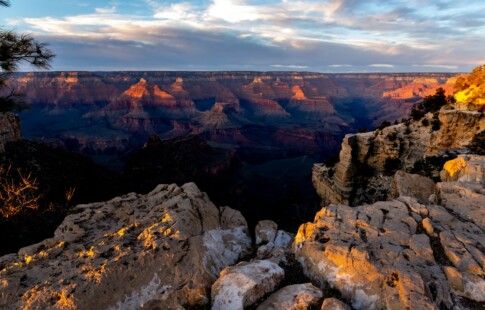
Wildlife Habitat Destruction a Growing Issue Across the Globe
We are reader-supported. When you buy through links on our site, we may earn affiliate commission.
The last year has been a rough one, with a high number of wildlife habitat destruction in the name of progress and the death of the last male white rhinoceros. Those who love animals and want to see diversity of species continue to worry about this issue and how human expansion impacts the world’s ecosystems. A recent United Nations report showed as many as 1 million species on the brink of extinction. The study points to human activities placing 25% of species at risk of extinction in the next few decades.
Even though the UN warns of pending doom to many creatures and we all understand the impact the loss of one species has on local habitat, humans seem incapable of curbing development.
Human Development Causing Wildlife Habitat Destruction
As the world’s population grows, more areas previously part of the ecosystem for a variety of species are taken away or threatened. One example of this can be seen in the recently discovered and endangered Tapanuli orangutan. The species lives in a province of North Sumatra of about 1,420 square kilometers and has only around 800 members in its population. The orangutans are confined to the Batang Toru Ecosystem, and conservationists are working on adding 8,077 hectares to the conservation part of the forest to further protect this species. Of course, North Sumatra is far from the only place where human development threatens local flora, fauna and wildlife. There needs to be a delicate balance for any ecosystem to function properly, and removing trees or building energy plants threatens that natural harmony. One thing that will help reduce wildlife habitat destruction is construction companies using sustainable practices and reducing pollution.
Climate Change Concerns
Whether you think climate change is occurring rapidly or you believe it’s a slow march, there is little denying that nature is being impacted. Some scientists point to recent threats such as fires, deforestation, flooding and big storms. The oceans may become more acidic, which affects zooplankton in particular. This, in turn, creates changes in the entire ocean food structure. Although it’s impossible to completely negate the changes industrialization has brought to the world, individuals adopting greener practices and demanding the companies they do business with follow suit helps slow climate change.
Lack of Education on Extinction
Perhaps one of the biggest threats to species on planet Earth is the lack of understanding about how many species are at risk. It isn’t always big issues such as deforestation that cause animals to disappear, although that does have a huge impact. Sometimes it is local practices, such as building a new dam or the methods hunters use to trap. Recently, eight island bird species have either died out or are at high risk of doing so. In Brazil, Spix’s Macaw has been named extinct. While the biggest culprit is habitat loss, there is also degradation of the area from unsustainable agriculture. Better educating builders on ways to develop sustainably and not negatively impact natural habitats is a first step toward changing the tide. For example, knowing what types of species can survive in a city environment and which ones can’t helps with relocation and city planning efforts.
Fires Threatening Wildlife
Devastating forest fires in Australia, the United States and other parts of the world put already at-risk populations in danger. Sometimes fire restores habitats, but when it rages out of control, it simply destroys everything in its path and may permanently destroy plant and animal life and causes wildlife habitat destruction. Better efforts to educate the public on fire safety when outdoors would solve part of the issue, but there are also occasions where forest fires start due to a lightning strike or similar natural occurrence.
Soil Erosion and Water Disruption
When trees are removed, soil erodes more quickly. This can disrupt the natural flow of water, as well. In any ecosystem, wildlife relies on watering holes, and when it isn’t available, they may leave the forest behind and move into the cities in search of it. This creates an issue where nature and civilization come into contact and usually results in loss of life for the animal.
In addition, erosion may prevent shelter from growing for wildlife, and lack of water can cause animals to die. Some of the casualties from this are certain to be plants and animals already at risk of disappearing forever.
Preserving Diversity for Future Generations
In an ecosystem, even the smallest species has a function. Remove one aspect of the circle, and the entire system risks collapse. Much of what we eat, make and use comes from what is grown. If species fail, the whole world can be put at risk. Preserving diversity for future generations and the protection of all mankind is a worthwhile endeavor, but one without a simple solution.
Share on
Like what you read? Join other Environment.co readers!
Get the latest updates on our planet by subscribing to the Environment.co newsletter!
About the author
Jane Marsh
Starting from an early age, Jane Marsh loved all animals and became a budding environmentalist. Now, Jane works as the Editor-in-Chief of Environment.co where she covers topics related to climate policy, renewable energy, the food industry, and more.





